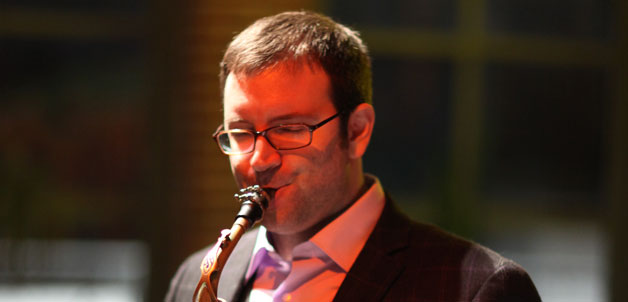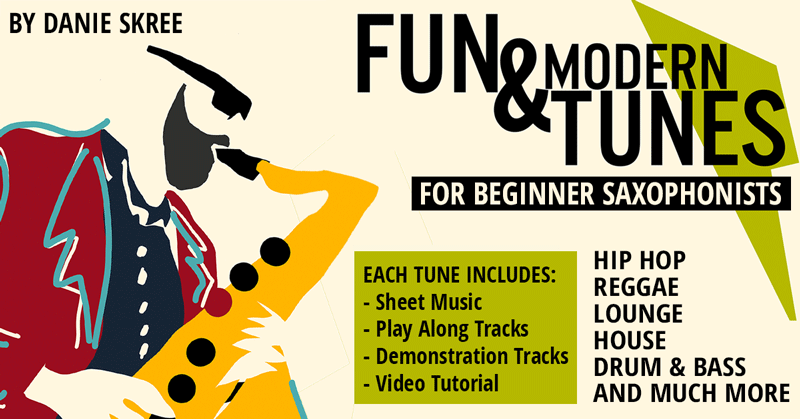Patrick Cornelius Talks Practicing, Melody, and More
 In the hands of New York City’s Patrick Cornelius, the saxophone is mere putty. His latest solo outing titled Maybe Steps features Cornelius soaring through a melodic collection of original tunes as well as a couple of standards accompanied by an intense, yet subtle backdrop supplied by his top-notch rhythm section.
In the hands of New York City’s Patrick Cornelius, the saxophone is mere putty. His latest solo outing titled Maybe Steps features Cornelius soaring through a melodic collection of original tunes as well as a couple of standards accompanied by an intense, yet subtle backdrop supplied by his top-notch rhythm section.
Starting off on the piano at age 4, Patrick moved over to the saxophone as a teenager. Kicking off his professional career as a high school student, Patrick went on to study at some of music’s most esteemed institutions including The Berklee College of Music, Manhattan School of Music, and Juilliard. And with three consecutive ASCAP Young Jazz Composer awards under his belt, it’s no surprise that he’s got four solo albums under his belt.
Cornelius’ groups have found themselves performing at venues such as Ronnie Scott’s, London Jazz Festival, The Blue Note, The Jazz Gallery, Smalls, and The Bar Next Door to name just a smattering.
The Interview
Doron Orenstein: What was it that inspired you to make music your life?
Patrick Cornelius: Well, it sort of happened one step at a time. I started playing piano at the age of 4, and then saxophone at the age of 13, but it wasn’t until I was a freshman in high school that I realized that it was possible for someone like me to actually be good at music. The high school I went to (Marshall High School in San Antonio) had a legendary jazz program (little did I know), and when I was a freshman, my older brother (then a junior) became the pianist in the group.
So I went to a school assembly during the first week of school, and the jazz band was playing. There was a tenor saxophonist named Tim Smith (who subsequently went to North Texas) who stood up, and improvised a jazz solo. This knocked me out! I couldn’t believe that kids could actually play jazz music, and actually IMPROVISE. Tim was really nice to me. He gave me lots of tips and inspired me to practice all the time.
I soon gave up the piano to focus exclusively on playing the saxophone. By the time I was a Junior in High school, I started to actually consider going to a music school after graduation and trying to be a professional musician. I had other options and interests, but every time I started to think about possibilities, I always came back to music. I guess I started to slowly realize that I couldn’t ever really be happy doing anything else, though it took until the fall of my Senior year for me to completely convince myself.
DO: What do you find yourself practicing the most these days?
PC: Well, being a full-time dad to a 2-year-old leaves me considerably less practice time these days. I have learned to use what time I get a lot more efficiently. On average, I get to shed about 2 hours most days now (compared to the 5-8 hours per day from just 3 years ago).
I always begin with tone studies. Usually overtones, followed by any number of long tone variations (I get ideas from the Larry Teal book), slow songs, hymns, intonation exercises, etc. I spend some time on classical etudes (I like the Fehrling, Guy Lacour 8 difficult etudes, the Marcel Mule books, and the Klose), and then the last segment either working on a transcription, learning a tune, or practicing any number of improvisation studies I come up with for myself. The specific exercises usually vary from day to day, but the general order of topics usually stays the same.
DO: What have you been listening to lately?
PC: I just bought Miguel Zenon’s latest album from iTunes, and I love it. I also like Ambrose Akinmusire’s latest, Branford Marsalis’ Eternal, anything by Sidney Bechet, Johnny Hodges, Lester Young, Bird, Coltrane’s Crescent and Lush Life. I’m also a huge Peter Gabriel fan, and have been listening to Scratch My Back a lot lately to get ready for his upcoming new one.
DO: What would you say is the skill or attribute that’s helped you the most as a musician?
PC: I think my greatest strength as a musician is my ability to interpret a melody. That’s the biggest thing I get from listening to so much Louis Armstrong, Lester Young, and Johnny Hodges. There’s something you hear in the nuances of saxophonists who really love older jazz (like pre-bop) that lends their playing an extra warmth or sheen. I like to think that that quality comes through in my playing, even though my music is much more contemporary.
DO: What’s the single best piece of advice you’ve been given over the course of your playing career?
PC: The best advice I’ve been given is the same advice I give to younger musicians: keep in touch with the musicians that you come up with. Your peers are your biggest advocates, and can be your biggest source for inspiration. As musicians we are definitely a community, and your generation will help define much of the music you make. I came up with saxophonists like Jaleel Shaw, Mark Small, Dayna Stephens, Bob Reynolds, Walter Smith, and Miguel Zenon (to a lesser degree – he was several years ahead of me at Berklee). They’re all doing really great things now, and it’s great to hear how they’ve developed over the years.
DO: What’s the next musical frontier for Patrick Cornelius?
PC: Well, I would like to continue releasing albums every one or two years for a while. I’ve never released a live album before, so that’s on the list, along with an idea for a suite of tunes for larger ensemble based on some children’s poems that I read to my daughter, and another project where I play only soprano. I hope I can realize all three of these projects within the next five years!
DO: For those new to your music, which recording would you suggest they pick up?
PC: I think my latest CD Maybe Steps is a good point of entry because of the diversity in instrumentation and song moods. There’s a lot of accessible (but interesting) stuff there. I’m also very proud of my last album Fierce, which featured more whimsical program of music for sax, bass, and drums (and an additional horn on a few tracks). All of the albums I’ve released (Lucid Dream, Fierce, Maybe Steps, and The TransAtlantic Collective’s Traveling Song) are available on my web site www.patrickcornelius.com.
DO: What’s your saxophone equipment setup?
PC:
- My main axe is my 68,xxx Mark 6 alto with a rubber Yanagisawa 7 mouthpiece and either Java 3.5 or Rico Jazz Select 3 Hard reeds.
- I also play an early 23,xxx Balanced Action Tenor with a Boksen custom copper neck, Ted Klum Link Reso-Chamber copy mouthpiece and Rico Jazz Select 4 soft reeds.
- Selmer Super Action Series 3 soprano with Bari rubber mouthpiece and Java 3.5 reeds.





